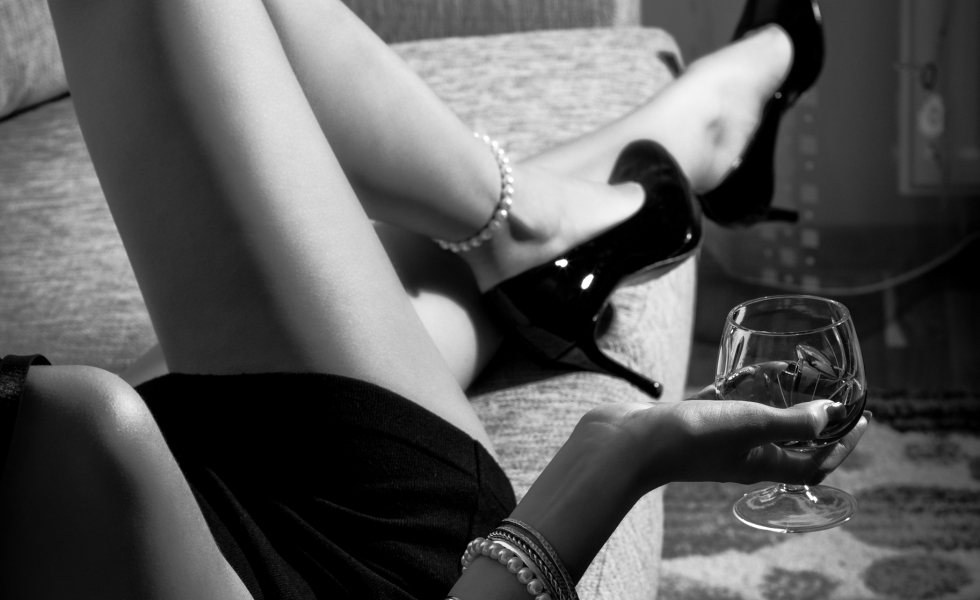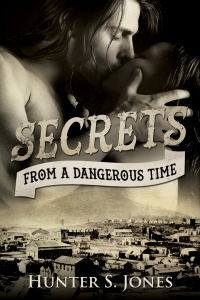WHISKEY vs BRANDY
WHISKEY vs BRANDY
Or
His Flag is Out.
By
Hunter S. Jones
When the English Historical Fiction Authors announced a blog hop to commemorate four years as a writing group, I was excited about the possibility of jumping onboard. The second anthology in a series, named CUSTOMS, CASTLES AND KINGS, written by members of the group and spearheaded by our fearless leader, Debra Brown, is being released on September 30. Ms. Brown suggested that we blog about customs.
Customs is a fantastic concept, but how would I go about this. My first foray into historical fiction became the best-selling PHOENIX RISING, a fictional look at the last hour of Anne Boleyn. I’m not quite ready to venture into Tudor history and its social mores as of yet. So you’ll know, there will be plenty more of Tudor History from me in 2016.
SECRETS from a DANGEROUS TIME, my latest project is a Victorian time travel series based in the U.S. following the Civil War, primarily in north Georgia and the Chattanooga Tennessee area. I do know something of practices in the region, since my father’s family has been here since the late 1700s. So, what about dogs? Dogs are something we all have. Tennessee’s Walker Foxhounds and beagles are as loved now as they were two hundred years ago. But, no…no. Hunting is too controversial. Sipping a brandy after work, my mind begins to roam. What is a unique practice in the American Southeast? What has been ingrained in our memory as “our” custom, yet has ties to the United Kingdom? What is the one thing which we believe belongs to us, but is actually part of our “Colonial hangover,” metaphorically speaking, of course.
Taking another sip of brandy, my British husband walks into the room and says, “I shall join you with a whiskey. Let’s toast our anniversary.” With those words, this blog was born. Whiskey vs Brandy.
What could be a more American custom than a toast on a special occasion? According to Drinking in Colonial America, “Colonial Americans believed alcohol could cure the sick, strengthen the weak, enliven the aged, and generally make the world a better place. They tippled, toasted, sipped, slurped, quaffed, and guzzled from dawn to dark.”
There is a theory that the Mayflower had more barrels of whiskey on it than it did passengers. Another theory notes that the Pilgrims were basically dropped off at Massachusetts Bay instead of being taken to the Virginia Colony simply because the crew determined there wasn’t enough beer and whiskey to get themselves back to England. Keep in mind that colonies were a business at that time.
The early settlers in the thirteen colonies kept the British concept that water was unsanitary. They began each day with “a pick-me-up and ended it with a put-me-down.” Between daylight and dusk, they imbibed a mid-morning whistle wetter, a luncheon libation, an afternoon accompaniment, and a supper snort. They ended the days with several rounds at the equivalent of a British public house, called a tavern in the early colonies. These establishments were used by judges as courtrooms. Taverns were the center of the communities, hosting social events such as christenings, weddings, funerals, trials, and election-day gatherings. The seeds of the American Revolution were sown in these locations due to the sharing of open ideas throughout the colonies. 

Early Americans did not care what anybody thought about their love of alcohol. As a Georgian wrote: “If I take a settler after my coffee, a cooler at nine, a bracer at ten, a whetter at eleven and two or three stiffners during the forenoon, who has any right to complain?” Craftsmen drank at work, as did hired hands in the fields, sailors at sea, and soldiers in camp. College students enjoyed malted beverages…Harvard had its own brewery. When the school did not supply sufficient beer in 1639, President Nathaniel Eaton lost his job.
Like students and workers, the Founding Fathers enjoyed a drink or two. John Adams began his days with a draft of hard cider. Thomas Jefferson imported fine wines from France. John Hancock was accused of smuggling wine. Patrick Henry worked as a bartender and as Virginia’s wartime governor, served home brew to guests.
The age of the cocktail lay far in the future. Colonists enjoyed alcoholic beverages with such names as Rattle-Skull, Stonewall, Syllabub, Sling, Toddy, and Flip. They had a colorful collection of words to describe drunkenness. Benjamin Franklin collected more than 200 terms, including afflicted, biggy, boozy, busky, buzzey, cherubimical, cracked, “halfway to Concord” and my favorite, “His flag is out.”
Not everyone believed that alcohol consumption was a good idea. The Virginia Company of London wrote to Governor Francis Wyatt at Jamestown in 1622 complaining that the effects of drinking had a negative impact on the colony’s production and output of goods. James Oglethorpe, founder of Georgia, fearing rum would ruin his business venture, tried to ban it’s consumption in his colony. Puritan leaders attacked drunkenness, although they also saw alcohol as a necessary part of life. Benjamin Franklin enjoyed a convivial drink but called for moderation, writing “nothing is more like a fool than a drunken man.”
By 1790, United States government figures showed that annual per-capita alcohol consumption for citizens over fifteen years of age amounted to thirty-four gallons of beer and cider, five gallons of distilled spirits, and one gallon of wine. Keep in mind, these amounts were what could be recorded as purchased. What people made and drank at their own homes and farms was not recorded. 

Early Americans thought alcohol was healthful. We were an English Colony and as such shared their customs. To them, drinking kept people warm, aided digestion, and increased strength. Remember, their work was much more labor intensive than work in today’s world. Alcohol soothed tired muscles and was seen to not only prevent health problems, but it to cure. They took whiskey for colic and laryngitis. Hot brandy punch addressed cholera. Rum-soaked cherries helped with a cold. Pregnant women and women in labor received a shot to ease their discomfort.
Where do the differences between whiskey and brandy enter our country’s settlement? Let’s look at the definitions of the two. Whiskey (whisky) is a type of distilled alcoholic beverage made from any form of fermented grain mash. Depending on the geographical region or type of whiskey that is being made, whiskey can be made from barley, malted barley, rye, malted rye, wheat, and corn. Whiskey became the drink of the Scots Irish, the hardy settlers of the Appalachians who forged into the western areas of Pennsylvania, Virginia, Kentucky, Tennessee, Georgia and Alabama following the American Revolution. Whiskey has never gone out of style and is a global phenomenon.
Brandy (short for brandywine) is a spirit distilled from wine, grapes and other fruit juices. The word ‘brandywine’ is derived from the Dutch word ‘brandewijn’ meaning “burnt wine.” Early colonial wine was made from apples or peaches, especially in what became the Southern coastal states. Even during Prohibition, farmers in the South couldn’t understand why “our medicine” was being forbidden because brandy was considered necessary for medicinal purposes.
We see how alcohol had its place in everyday life as the United States was settled. In my series, SECRETS from a DANGEROUS TIME, Dr. Garrett Cleighton is of Colonial English heritage, thus apple brandy takes its place in the story as part of his ‘medicine.’ Whiskey will appear in the series, mirroring the usage of alcohol by Americans as times and customs changed.
SECRETS from a DANGEROUS TIME
Chaos reigns in a lawless time filled with revenge and betrayals. Following the American Civil War, the Southern States are reeling under the revenge taken on them by the victors.
Casey King must change her name, fake a marriage and forget modern comforts to survive within the world she now finds herself – 1873 post-Civil War Reconstruction Era Chattanooga, Tennessee…a world full of violence and mystery.
The charismatic Dr. Garrett Cleighton, a mixed heritage Cherokee, decides to give her a part in his traveling medicine show. Casey takes a chance in order to hide her secrets. Dr. Cleighton could betray her or he might keep his promises.
Author Hunter S. Jones mixes romance with Civil War drama and brings contemporary suspense to life in the setting of the Reconstruction South.
The journey begins in “Secrets from a Dangerous Time, Story 1”.
Get this Amazon Exclusive story today at getBook.at/Secrets1
Today is the release of Castles, Customs, and Kings: True Tales by English Historical Fiction Authors Volume 2.
Edited by Debra Brown and Sue Millard
Edited by Debra Brown and Sue Millard

An anthology of essays from the second year of the English Historical Fiction Authors blog, this book transports the reader across the centuries from prehistoric to twentieth century Britain. Nearly fifty different authors share the stories, incidents, and insights discovered while doing research for their own historical novels.
From medieval law and literature to Tudor queens and courtiers, from Stuart royals and rebels to Regency soldiers and social calls, experience the panorama of Britain’s yesteryear. Explore the history behind the fiction, and discover the true tales surrounding Britain’s castles, customs, and kings.
Purchase links:
This is a blog hop! Join the other History Hoppers at the following…Powered by Linky Tools Click here to view the Linky List…
SOURCES:
www.History.org. Colonial Williamsburg. That The Future May Learn From The Past.
Beverages And Their Adulteration Origin, Composition, Manufacture, Natural, Artificial, Fermented, Distilled, Alkaloidal And Fruit Juices, Distillation in America, by Harvey W. Wiley.
History of Spirits in America, The Book of Bourbon offers a wealth of information on the settlement of the United States. Although none of the articles are directly quoted in this blog the stories from the site offer information into the many alcoholic beverages and their metamorphoses throughout the United States growth and settlement.
All photographs or illustrations are public domain or courtesy of the authors.



No comments:
Post a Comment